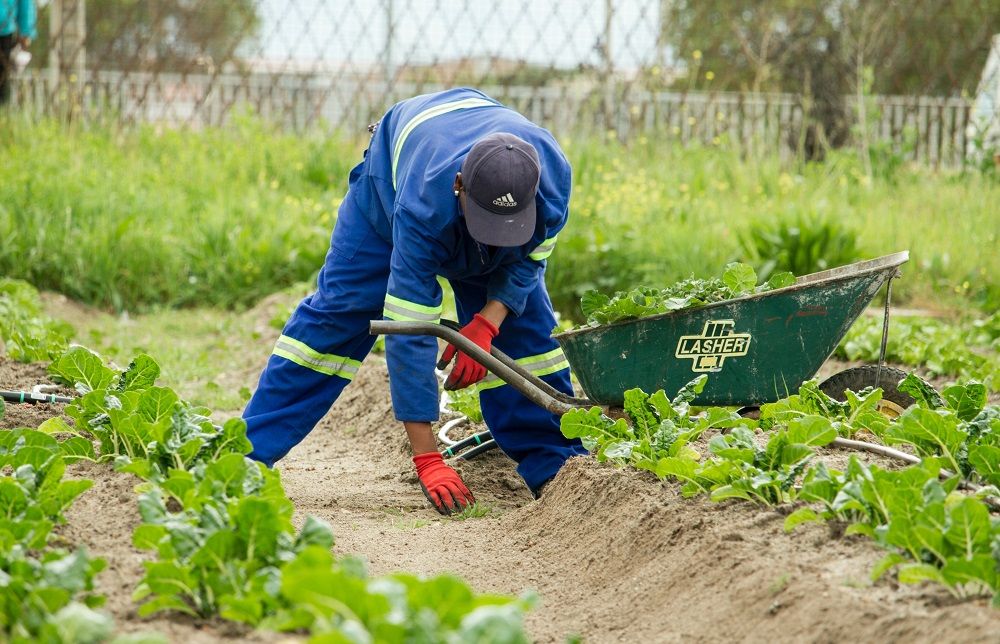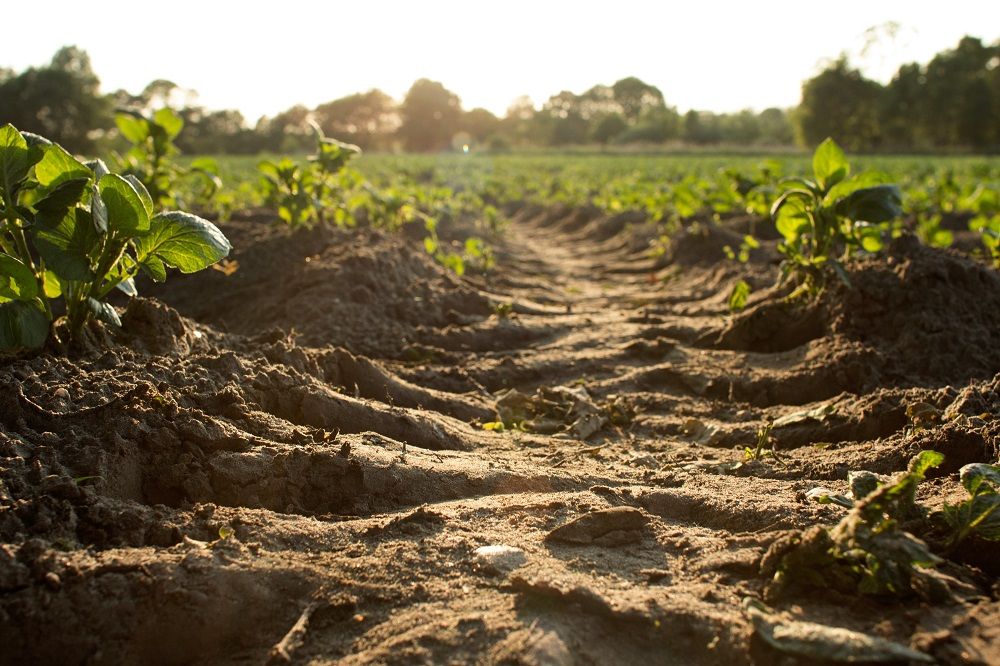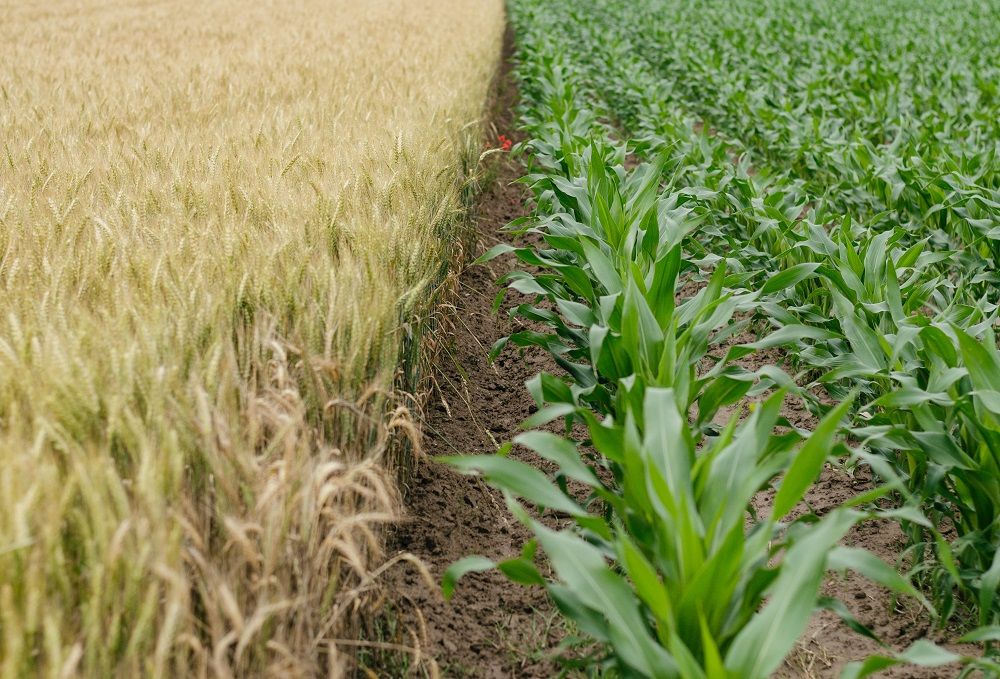
10 Ways to Incorporate Regenerative Farming Practices on Your Farm
Date: 18/04/2023
In a world facing the challenges of climate change, biodiversity loss, and soil degradation, regenerative agriculture has emerged as a promising solution to build a more resilient and sustainable food system. This holistic approach not only enhances agricultural productivity but also fosters environmental health and long-term profitability. If you’re looking for farm equipment to help make this happen, head on over to AgriMag’s farm equipment category to see what’s currently available for sale.
In today’s article, we’ll look at ten practical ways South African farmers can incorporate regenerative farming practices into their operations, addressing key concerns such as soil health, water conservation, and biodiversity preservation. By embracing these strategies, farmers can improve their resilience to climate change, promote rural development, and contribute to a greener and more sustainable future for all.
 Photo credit: Photo by Altered Reality on StockSnap
Photo credit: Photo by Altered Reality on StockSnap
What is regenerative agriculture?
Regenerative agriculture is a holistic approach to farming that focuses on improving and revitalising soil health, enhancing biodiversity, and promoting ecosystem resilience. It seeks to create a self-sustaining agricultural system that not only produces healthy food but also helps to mitigate climate change, conserve water, and restore degraded landscapes. By working with nature rather than against it, regenerative agriculture aims to build the long-term productivity and profitability of farming operations while simultaneously benefiting the environment and surrounding ecosystems.
Why is it important to adopt regenerative practices in South Africa?
- Soil degradation: South Africa faces significant soil degradation issues due to conventional farming practices, leading to a loss of soil fertility and productivity. Regenerative agriculture can help restore soil health and improve its ability to support crops.
- Climate change adaptation: South Africa is vulnerable to the impacts of climate change, including droughts, extreme weather events, and shifting precipitation patterns. Regenerative practices can help farmers build resilience against these challenges by fostering healthy, diverse ecosystems that are better equipped to handle such stressors.
- Water scarcity: Water scarcity is a major concern in SA, and regenerative practices can help in conserving water resources by improving soil structure, increasing water infiltration, and reducing runoff.
- Biodiversity conservation: Biodiversity is crucial for maintaining ecosystem services and the long-term sustainability of agriculture. Regenerative practices promote biodiversity by creating habitats for wildlife, fostering pollinator populations, and preserving indigenous plant and animal species.
- Carbon sequestration: It can help mitigate climate change by sequestering carbon in the soil, reducing greenhouse gas emissions from agricultural activities, and improving overall land management.
- Food security: By enhancing soil fertility and ecosystem resilience, regenerative agriculture can contribute to long-term food security by ensuring stable crop yields and reducing vulnerability to pests, diseases, and extreme weather events.
- Economic viability: Regenerative farming can lead to reduced input costs, such as fertilisers and pesticides, and potentially higher yields, resulting in increased profitability for farmers. Furthermore, these practices can open up new market opportunities for sustainably produced food products.
- Social and cultural benefits: Regenerative agriculture can contribute to preserving traditional farming knowledge and practices, while also promoting a sense of community and stewardship for the land among farmers and rural populations.
10 ways to incorporate regenerative farming practices on a farm
1. Adopt no-till or conservation tillage
Minimise soil disturbance by reducing or eliminating tillage, which helps preserve soil structure, reduce erosion, and improve water retention.
2. Plant cover crops
Grow cover crops between cash crops to protect and enrich the soil, reduce erosion, suppress weeds, and enhance soil fertility through nitrogen fixation and organic matter accumulation.
3. Implement crop rotation and diversification
Rotate and diversify crops to disrupt pest and disease cycles, improve nutrient cycling, and reduce the need for chemical inputs.
4. Integrate agroforestry systems
Combine trees, shrubs, and crops in the same area to create a more diverse and resilient agricultural system, which can provide multiple benefits such as improved soil health, carbon sequestration, and enhanced wildlife habitat.
5. Use organic amendments
Apply compost, manure, or other organic matter to improve soil fertility, structure, and biological activity, which supports healthy plant growth and reduces the need for synthetic fertilisers.
6. Manage grazing
Implement rotational or holistic grazing systems that allow for recovery periods between grazing events, promoting grassland regeneration, soil health, and carbon sequestration.
7. Optimise irrigation and water management
Utilise efficient irrigation systems, such as drip irrigation or micro-sprinklers, to conserve water and improve water-use efficiency. Incorporate rainwater harvesting systems to collect and store water for irrigation during dry periods.
8. Promote on-farm biodiversity
Create habitat for beneficial insects, birds, and other wildlife by planting hedgerows, windbreaks, or riparian buffers, and maintaining natural areas on the farm.
9. Implement integrated pest management (IPM)
Employ ecological pest control methods, such as biological control, habitat management, and cultural practices, to reduce the reliance on chemical pesticides.
10. Build farmer knowledge and networks
Participate in workshops, training programs, or farmer networks to exchange knowledge, share experiences, and learn from others implementing regenerative farming practices.
Read: Soil Health Indicators: What are They & How Can They Help
 Photo by Anaya Katlego on Unsplash
Photo by Anaya Katlego on Unsplash
Challenges local farmers might face
South African farmers, like many others around the world, face challenges in implementing regenerative practices due to the effects of climate change. Regenerative farming aims to improve soil health, increase biodiversity, and enhance ecosystem functions by using practices such as no-till farming, cover crops, and agroforestry. However, climate change impacts present several challenges to the success of these practices in South Africa:
1. Climate change
- Drought and water scarcity: Climate change-induced droughts and water scarcity in South Africa hinder farmers' ability to establish and maintain essential regenerative farming elements like cover crops, trees, and other vegetation due to limited irrigation resources.
- Erratic rainfall patterns: Climate change-driven shifts in rainfall patterns create unpredictability, making it challenging for farmers to plan and implement regenerative practices like optimally timed cover crop planting and agroforestry systems.
- Increasing temperatures: Rising temperatures exacerbate water stress and heatwaves, negatively impacting crop growth, soil health, and regenerative farming productivity while also increasing pests and diseases that complicate these efforts.
- Soil degradation: Climate change effects, including heavy rainfall and erosion, contribute to soil degradation, which reduces fertility and plant diversity, making it difficult for farmers to establish regenerative practices dependent on healthy soil.
- Adaptation and financial constraints: Adapting to climate change and implementing regenerative farming practices demand considerable investments in technology, infrastructure, and training, which South African farmers may struggle to afford due to financial constraints and uncertain economic returns in a changing climate.
- Knowledge and skills gap: Implementing regenerative practices requires specialised knowledge and skills, which may be scarce in South African farming communities, necessitating assistance and training to address climate change challenges effectively.
2. Soil degradation and fertility
- Reduced soil fertility: Soil degradation leads to a decline in nutrient availability and organic matter content, which negatively affects crop growth and productivity, making it harder to achieve the goals of regenerative farming.
- Erosion and compaction: Degraded soil is more prone to erosion and compaction, resulting in poor water infiltration and reduced water-holding capacity, which in turn hampers the establishment of cover crops and agroforestry systems essential for regenerative farming.
- Loss of soil structure: Degradation can damage soil structure, reducing the ability of the soil to support plant roots and retain water, making it difficult to sustain diverse plant communities that contribute to regenerative farming success.
- Reduced soil biodiversity: Soil degradation can lead to a decline in soil biodiversity, including beneficial microorganisms and fauna that play vital roles in nutrient cycling, organic matter decomposition, and overall soil health, which are critical to regenerative farming.
- Limited carbon sequestration: Degraded soil has a reduced capacity to sequester carbon, which is a key objective of regenerative farming for mitigating climate change impacts and improving overall soil health.
- Increased susceptibility to pests and diseases: Unhealthy, degraded soil can make crops more vulnerable to pests and diseases, which can further complicate the implementation of regenerative practices.
3. Water scarcity and management issues
- Limited irrigation resources: Water scarcity reduces the availability of water for irrigation, making it difficult for farmers to establish and maintain regenerative farming elements like cover crops, trees, and other vegetation that require consistent water supply.
- Competition for water: With increasing demand for water from various sectors, such as industry and urban areas, farmers may face difficulties in accessing sufficient water resources for regenerative farming practices.
- Inefficient water use: Traditional irrigation systems may not efficiently use available water, leading to waste and insufficient water supply for regenerative farming, which may require higher levels of water for optimal results.
- Impact on soil moisture: Water scarcity can lead to reduced soil moisture, which is crucial for maintaining soil health, supporting plant growth, and encouraging biological activity necessary for regenerative farming.
- Increased vulnerability to drought: Regenerative farming often rely on consistent water availability to maintain vegetation cover and support soil health; water scarcity makes these systems more vulnerable to drought, potentially negating the benefits of regenerative practices.
- Challenges in water management: Implementing regenerative practices may require new water management strategies, such as rainwater harvesting or improved irrigation systems, which can be challenging for farmers to adopt due to financial constraints, lack of knowledge, or limited access to technology.
Read: Regenerative Farming Questions and Answers
 Photo by Dylan de Jonge on Unsplash
Photo by Dylan de Jonge on Unsplash
What potential does regenerative farming practices hold for South African farmers?
They hold significant potential for local farmers, offering various economic, social, and environmental benefits:
Improved soil health: They can enhance soil fertility, structure, and biological activity, leading to healthier soils that support better crop growth, productivity, and long-term sustainability.
Increased resilience to climate change: By promoting soil health, water conservation, and biodiversity, regenerative practices can help South African farmers better adapt to the impacts of climate change, such as droughts, extreme weather events, and shifting precipitation patterns.
Reduced dependence on external inputs: By improving soil fertility, pest management, and water management, regenerative farming can reduce farmers' reliance on synthetic fertilisers, pesticides, and other costly inputs, lowering production costs and enhancing economic sustainability.
Enhanced water management: It can help South African farmers conserve water resources and optimise water-use efficiency, which is crucial in a region facing water scarcity and increasing competition for water.
Increased carbon sequestration: This can help mitigate climate change by capturing and storing atmospheric carbon dioxide in the soil, contributing to national and global efforts to reduce greenhouse gas emissions.
Biodiversity conservation: By promoting habitat diversity and protecting native species, regenerative farming practices can contribute to conserving South Africa's unique biodiversity and maintaining vital ecosystem services, such as pollination and pest control.
Rural development and food security: Regenerative farming can enhance agricultural productivity, leading to improved food security and rural development. Additionally, the adoption of these practices may create new opportunities for local value-added products and services, such as agrotourism and sustainable supply chains.
Strengthened farmer networks and knowledge exchange: By adopting these practices, South African farmers can build a supportive community that shares knowledge, experiences, and resources, fostering innovation and collaboration within the agricultural sector.
The potential benefits for South African farmers are considerable. However, to fully realise these benefits, farmers must be supported through policies, research, extension services, and financial incentives that encourage the widespread adoption of regenerative practices and address the challenges they face in implementing them.
What kind of farming equipment can be used for and during regenerative farming?
Regenerative farming focuses on minimising soil disturbance and promoting soil health, biodiversity, and ecosystem resilience. As such, the equipment used in regenerative farming differs from conventional farming practices. Here are some key types of farming equipment that can be utilised during regenerative farming.
- No-till or minimum-till planters: These planters allow farmers to sow seeds directly into the soil without tilling, reducing soil disturbance and erosion while maintaining soil structure and organic matter.
- Cover crop rollers or crimper rollers: These tools are used to terminate cover crops without the need for herbicides or tillage. The terminated cover crop forms a mulch layer on the soil surface, which helps conserve moisture, suppress weeds, and promote soil health.
- Strip-tillage equipment: Strip-till machines create narrow strips of tilled soil for planting while leaving the inter-row area undisturbed. This approach combines the benefits of no-till and conventional tillage, providing a seedbed for optimal crop growth while minimising soil disturbance.
- Rotational grazing equipment: For integrated crop-livestock systems, portable electric fencing, water troughs, and mobile shade structures can facilitate rotational grazing. This practice involves moving livestock frequently to new pastures, which helps distribute manure more evenly, reduces overgrazing, and promotes soil fertility and vegetation recovery.
- Subsoilers or chisel ploughs: These tools can be used to alleviate soil compaction while minimising surface disturbance. They break up compacted soil layers, improving water infiltration and root penetration without causing significant disruption to the soil structure.
- Drip irrigation systems: Drip irrigation delivers water directly to the root zones of plants, minimising water waste and evaporation. This method is particularly useful in water-scarce regions, promoting efficient water use and conservation.
- Precision agriculture technology: GPS-guided equipment, sensors, and drones can help monitor and manage regenerative farming practices, enabling farmers to make data-driven decisions about planting, fertilisation, and irrigation. This technology can enhance the efficiency of resource use and reduce the environmental impact of farming operations.
- Composting equipment: Compost turners, shredders, and spreaders can be used to create and apply compost, which helps recycle nutrients, improve soil health, and reduce the need for synthetic fertilisers.
Read: How to use livestock for healthier soil
The choice of farming equipment will depend on the specific regenerative practices being implemented and the scale of the farming operation. However, the main goal is to minimise soil disturbance, promote soil health, and support the overall sustainability of the agricultural system.
 Photo by Henry Be on Unsplash
Photo by Henry Be on Unsplash
Regenerative agriculture holds significant promise for South African farmers as a means to address the pressing challenges of soil degradation, climate change adaptation, water scarcity, and biodiversity conservation. By implementing regenerative practices, farmers can improve soil health, increase the resilience of their operations, and contribute to a more sustainable and productive agricultural sector. Despite the obstacles they may face, support from research, policy, and financial incentives can help farmers overcome these challenges and unlock the full potential of regenerative agriculture. Ultimately, the widespread adoption of regenerative farming practices in South Africa can play a crucial role in enhancing food security, rural development, and environmental stewardship for generations to come. Are you looking for farming equipment to help manage your farming practices? Visit AgriMag today for a wide range of agricultural equipment for sale.
Read Related Articles
- Benefits of Regenerative Agriculture for Soil Health and Crop Yields
- Unlocking the Potential: Regenerative Farming in South Africa
- Promoting sustainable farming practices in South Africa
- In the Know: Regenerative Farming Questions and Answers
- Challenges of Implementing Regenerative Farming Practices
Categories:
Common category
Category Search:
Latest articles:

What to Look for When Buying a Skidsteer Loader for Farming

Why Planning Early for the Planting Season Pays Off

Why Winter Feed Management is Crucial for Livestock Health


